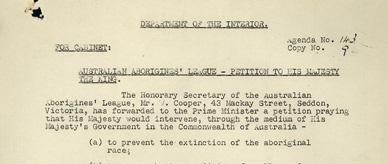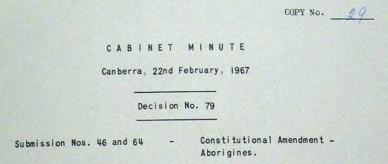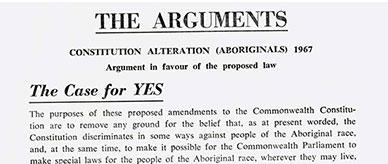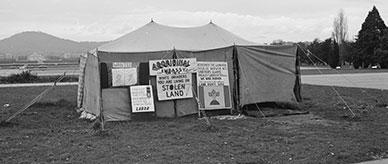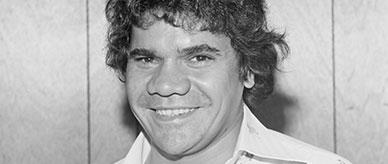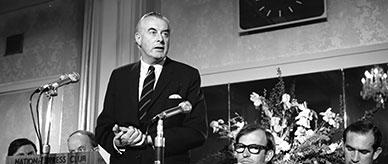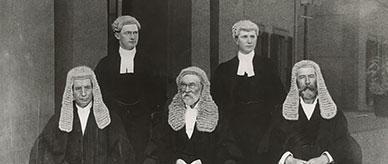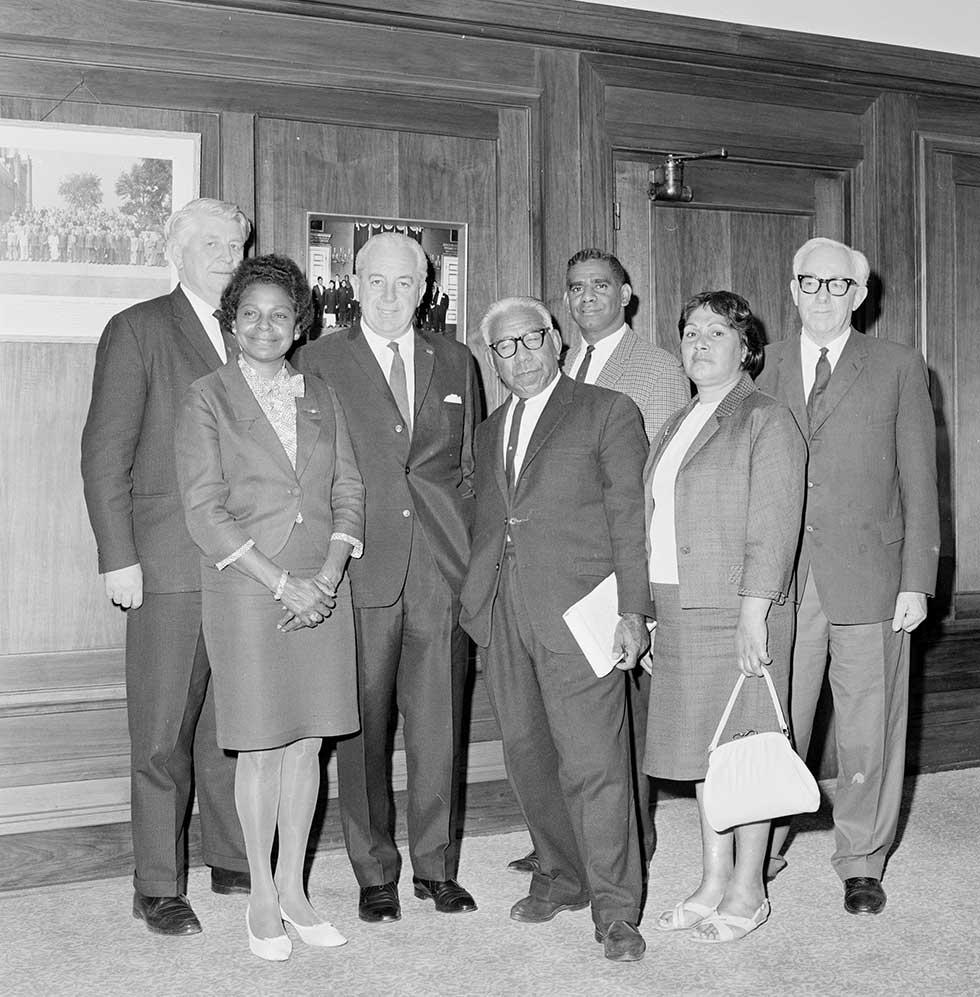
Lobbyists from the Federal Council for the Advancement of Aborigines and Torres Strait Islanders meet with Harold Holt in February 1967. Left to right: Gordon Bryant MP, Faith Bandler, Prime Minister Harold Holt, Douglas Nicholls, Burnum Burnum (Harry Penrith), Winnie Branson, William Wentworth MP


